Table of Contents
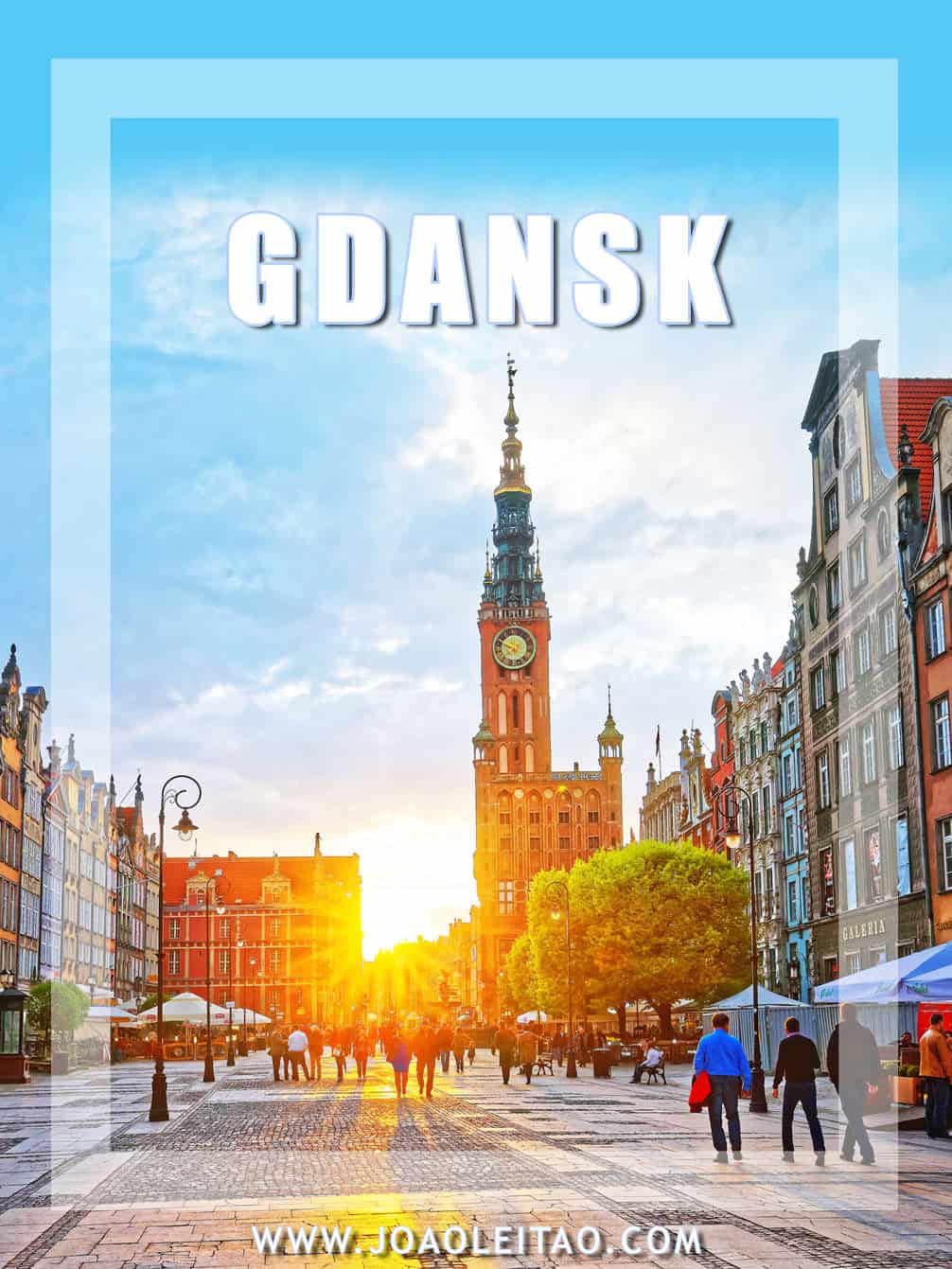
Gdansk is a fascinating city in the north of Poland. Don’t visit Poland without a trip to Gdansk. Otherwise, you’ll be missing out on an important tourism destination.
Although I visited Poland and Central Europe many times, I only traveled to Gdansk in 2013. It has a gorgeous historic center with lots of History and monuments to visit.
Top Gdansk
1
Motlawa River Waterfront
2
Dlugi Targ Street
3
Main Town Hall tower
4
St. Catherine’s Church Tower
5
Westerplatte
Visit Gdansk – What You Need to Know
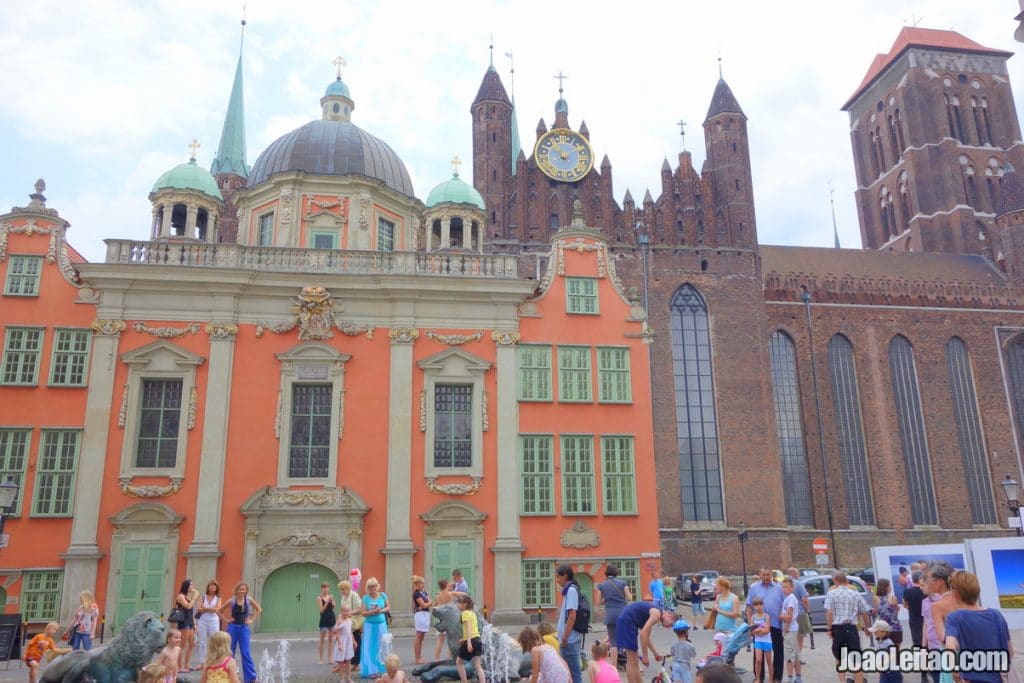
Gdansk was founded in the 10th century and grew around its port, strategically located in the Baltic Sea. At first, it was an important center for the Teutonic Knights and later it was one of the most important cities of the Hanseatic League.
It was severely damaged during the Second World War but was immediately rebuilt. Gdansk was a center of opposition against the communist regime and the city where the union Solidarity was established, which played an important role in taking down the dictatorship in 1989.
Today, with about half a million people, is considered to be one of the most beautiful cities in Poland. Most of the tourist attractions are in or around the historic center, and you can easily explore all of them on foot. In addition to the architectural heritage, there are a few museums to visit, but if you prefer, you can just enjoy the outdoors.
Top things to do in Gdansk
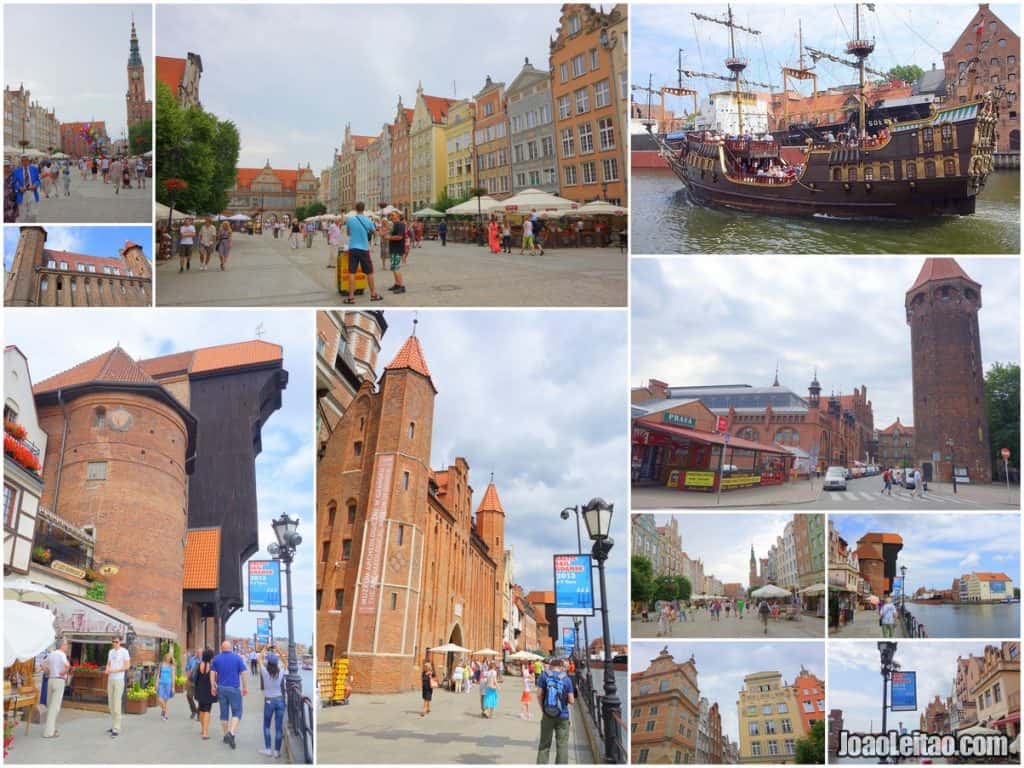
- Westerplatte
- St. Mary’s Church
- Green Gate
- Oliwa Cathedral
- Artus Court
- National Museum
- Old Market Square
- St. Catherine’s Church
- Museum of the Second World War
- Mewia Lacha Nature Reserve
- Town Hall
- Great Arsenal of Gdansk
- Riverside
Map of attractions in Gdansk
Map with the most popular attractions in Gdansk
Quick travel tips to visit Gdansk
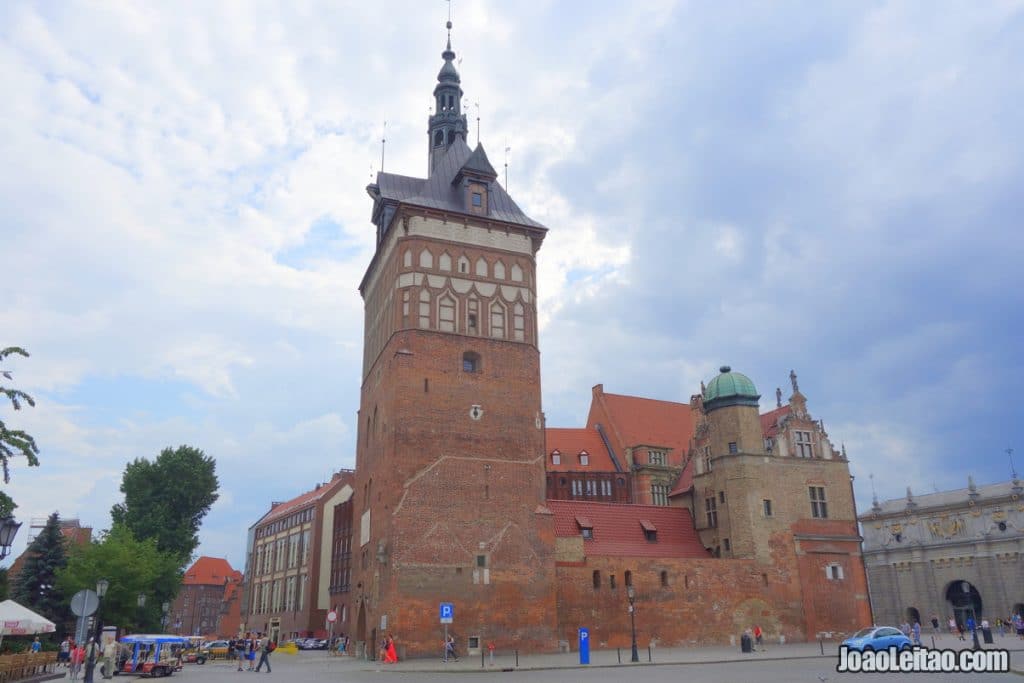
- Wake up early and be the first at monuments, museums, or other landmarks
- Go up the Pacholek Tower in the historic center for the best view of the city
- Visit the famous Westerplatte Peninsula out of town
- Go on a free walking tour
- Although it’s very cliché and touristy, take a ride on the Ustka pirate ship
- To find out when to go to Gdansk, gather all information about the seasons and local climate.
- The best time to visit Gdansk is between May and September when it’s warmer and the days are longer.
Best places to visit in Gdansk
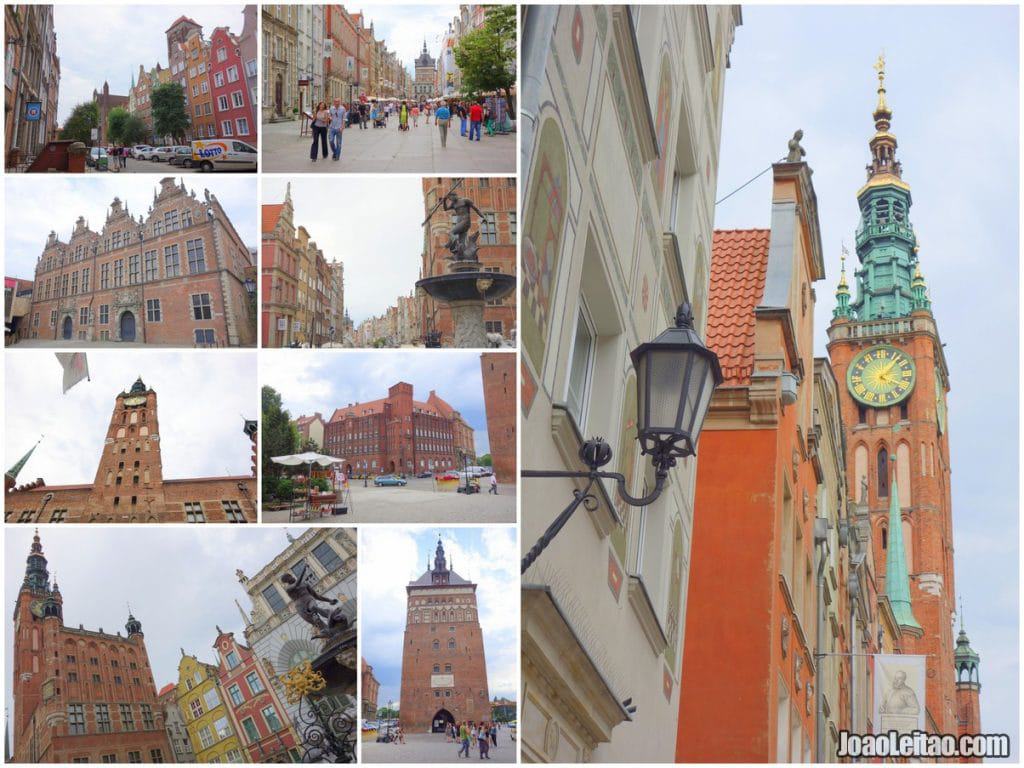
Top 10 places to visit in Gdansk.
1. Westerplatte
The Westerplatte peninsula is a natural defense of the Gdansk port and was the set of one of the first battles of the Second World War when a small Polish elite force resisted the German attack for almost seven days.
Their resistance didn’t stop the war, but it’s reminded until the present time as a heroic act. In 1966 a monument to the resistants of Westerplatte was inaugurated there — an embossed granite tower, 25 meters high.
Nowadays it’s a park open to the public where you can see the forts’ ruins and, in the summer, you can visit the small museum in one of the garrison buildings. To reach this site from the city center, take bus 106 that departs from the train station.
2. St. Mary’s Church
This is one of the largest brick churches in the world, of massive proportions. It can accommodate 25,000 people, has 300 tombs and 31 chapels. The construction began in the mid-14th century, allegedly on the same location where there once was a wooden church and was officially finished in 1502.
The interior is decorated with paintings from the Gothic, Renaissance, and Baroque periods. Its complex astronomical clock is remarkable, showing the day and time, the moon phases, the position of the moon according to the Zodiac signs, and the saints’ calendar.
You can climb the 405 steps that take you to the top of the 78-meter tall tower for a spectacular view over the Gdansk Old Town. Between 1981 and 1983, when the country was under Martial Law, members of the Solidarity union used the tower as a hideout.
3. Artus Court
This fabulous complex of buildings is located in Gdansk’s historic center and it was built between 1348 and 1350. It was designed by Abraham van den Blocke, but the original was destroyed by a fire in 1476, so what you see today is a 1617 reconstruction made in Mannerist style.
The name is a reference to the mythical Court of King Arthur, a trend at that time in Baltic Europe when secret brotherhoods were established to pay tribute to the Arthurian mannerism. For centuries, Artus Court was the meeting place for merchants and a social center in Gdansk, gradually opening up to the ordinary people.
Its golden age was between the 16th and the 17th centuries, but in 1742 the City decided the place should become the Stock Market. It currently houses a section of the Gdansk History Museum, which is open to the public.
4. Great Arsenal of Gdansk
The Great Arsenal is from the early 17th century and it’s the finest example of Mannerist architecture in Gdansk. It was designed by Anthony van Obbergen, who was inspired by a similar building in Harleem, Holland.
Since its construction, it stored weapons and ammunition, which is a strange contrast with the intense artistic look, both indoors and outdoors. The military presence at the Arsenal ended in 1920 when a business center was established on the first floor.
The building was destroyed in 1945 during the Second World War and was rebuilt after the war ended.
5. Green Gate
The Green Gate was built between 1568 and 1571 and designed by architect Reiner van Amsterdam, who was inspired by the Town Hall in Antwerp.
It was meant to be the royal house in Gdansk, but ironically none of the Polish monarchs ever spent the night there. Apparently, the house wasn’t comfortable and they always opted for the houses near Artus Court.
Nowadays, the Green Gate is part of the National Museum and houses several exhibitions, including the office of former president Lech Walesa. Before that, in 1880, it housed the Museum of Natural History.
6. Town Hall
The Town Hall is in the city center, naturally, and it was originally built at the beginning of the 14th century in Gothic and Renaissance styles. Between 1378 and 1382, shortly after its construction, it was expanded by Henryk Ungerdin. In 1457, it was expanded again. The tower was finished in 1488 and the dome was added in 1492 and destroyed by a fire only two years later.
In 1556, a fire destroyed the building again. It was rebuilt again in a Flemish-inspired Renaissance style and damaged again during the Second World War. It currently houses the National Museum, a must-visit site not only for the exhibitions but for the richly ornate interior. In the summer, you can go up the tower, which has a 37-bell carillon since 2000.
7. Oliwa Cathedral
This cathedral was built on the site where once was a simple wooden church. In 1224, that temple was replaced by another one made of brick that burned down in 1350 and was immediately rebuilt.
In 1626, Swedish invaders destroyed the church again. The church you see now has an unusual shape, with two Gothic-style octagonal towers, tall and slim, that frame the Baroque-style façade with the entranceway to the three-aisle church. The proportions of the church, 90 meters long and 8 meters wide, cause a visual effect that makes the interior appear longer than it is.
One of the top features is the organ built by Johann Wulf in 1780, the largest of its kind in Europe at the time. Must-sees include the Baroque 1688 main altar and the white marble tomb of the Dukes of Pomerania.
8. St. Catherine’s Church
This is the oldest church in Gdansk, initially built in 1220 and altered in the following centuries until the 15th century. After that, the only addition was the Baroque top of the tower in 1634. The church has a carillon with 49 bells that’s been telling time every hour since the beginning of the Second World War.
Between 1545 and 1945 it was a Protestant temple and after that it became a Catholic temple. A fire in 2006 destroyed the church and caused the roof to collapse. The reconstruction and renovation works put the church back in shape. There’s an exhibition inside about the fire.
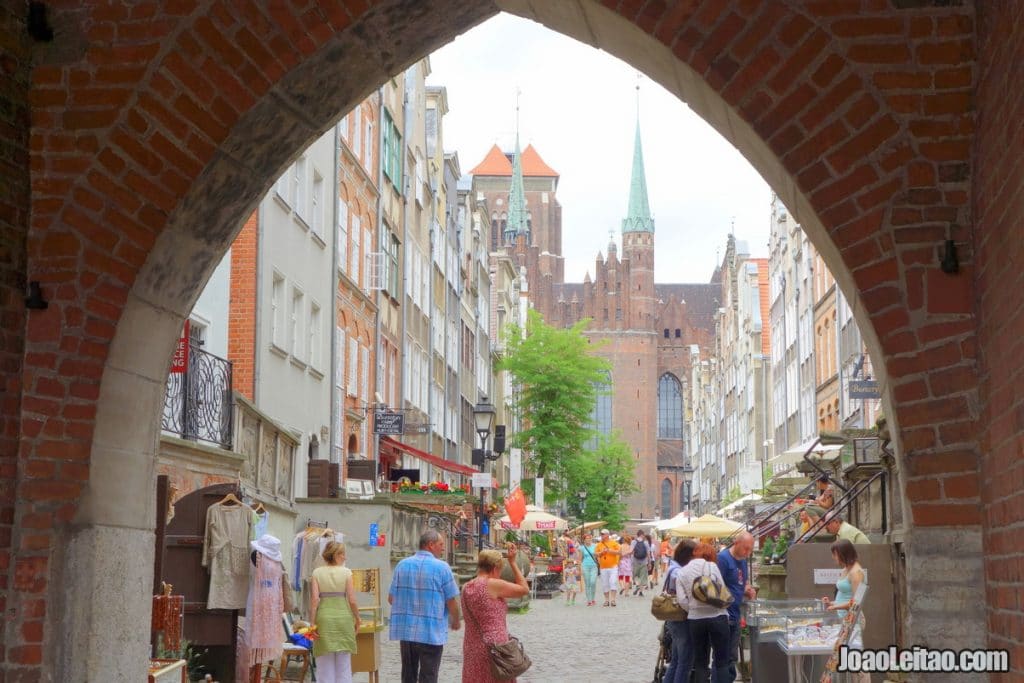
Museums in Gdansk
1. Museum of the Second World War
It’s a modern museum that began construction in 2012 and opened in 2017, located in an area near the Gdansk historic center that was severely damaged during the Second World War. It’s a bold design by architecture company Kwadrat, with the main building covered in brick rising from the ground at a strange 56-degree angle representing a howitzer buried in the ground that never exploded.
The exhibition focuses on the Second World War, the events that led to the conflict, and topics like the Spanish Civil War and daily life during the months before the German invasion. It’s a great museum, well-curated, with diverse and interesting pieces on display throughout over 5,000 square meters.
2. National Museum
The National Museum is inside an old Franciscan Convent built in Late Gothic style in the second half of the 15th century. In 1556 the monks gave the convent to the City, which used it to house the public library from 1643.
A museum started in the mid-19th century and was completed by 1872, with a gradually growing collection.
The most famous piece is probably Hans Memling’s The Last Judgment triptych, which returned to Gdansk in 1956 after it was taken twice. First, by Napoleon’s armies and second, by the Germans during the Second World War. The building was damaged during the war and, although the pieces were removed in advance, most of them are gone. The museum reopened in 1948 and uses state funds and private donations to grow its collection.


